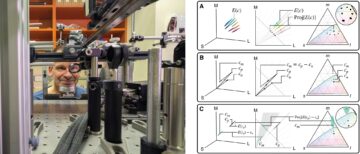Until a couple of years ago, robotic sewing was a big topic of debate and the apparel industry clearly couldn’t go either way! Majority of the industry people believed the robotic sewing isn’t feasible due to flexibility of fabric and that somehow stays true in even today’s time.
One fact that can’t be overlooked is that the complete automation of sewing process of a huge number of apparel commodities is still not available, but there are certain innovations that serve almost the same purpose through advancements in the sewn industry.
All these advancements highly aim at reducing human intervention which has become a necessity for factory as they look to simplify arduous and complex processes which have always been carried conventionally through labour workforce. The factory owners need to understand the cost (both direct and indirect) involved in carrying complex processes by deploying hundreds of workers, when the same process can be done more efficiently and effectively by automated solutions.
The automatic pick and place system is one such innovation that promises massive cut in process cost and reduction of human involvement in complex processes.
Jack’s ‘Pick and Place’ system through robotic arm in its pattern sewer is exemplary…
One company that has touched great heights in terms of innovations in sewing technology over the past decade is China-based world’s leading group Jack Stock. Its automatic pattern sewer with robotic arm is an indication of things to come in sewing floor.
As there is a robotic arm attached to the pattern sewer, one operator can monitor 3 sewing machines at one time. The robotic arm has been developed by Jack in collaboration with Huawei, which is a Chinese leading electronics and technology provider.
“This robotic arm equipped with our pattern sewer is our answer to the people who are looking for robotic sewing in clothing industry,” shared Martin, Regional Manager (Middle East), Jack Stock with Apparel Resources.
The biggest advantage of this automatic pattern sewer is that it shows two different designs can be sewn by the same sewing machine. The sewing machine can visually identify the designs in the template and sew accordingly as a camera is fitted in the sewing head which decides the sewing pattern. As robotic arm gets inputs from sewing head, it picks template from one sewing station and puts it on another, all automatically, saving enormous amount of cost of operators and time and increasing productivity of the entire process.
LOWRY Robots introduced by SoftWear Automation revolutionise the textile and apparel industry…
SoftWear Automation of USA pioneers in robotic automation in textile and apparel industry as its technology – LOWRY system – uses visual sensors, robotics and cloud computing to automate the transfer and sewing of fabric for manufacturing.
The LOWRY system is a 4-axis robot that can be used for fabric handling, pick and place operations as well as direct sewing. The system uses a high speed visual sensor to precisely track fabric and prevent distortion during the sewing process.
The technology leverages all the advancements made in vision technology allowing for efficient production of sewn goods. The vision technology recognises material shape, size, fabric, style and sewing requirements in order to calculate and complete full automation of a product.
This means minimal retooling is required any time a change or an upgrade is made to the style or appearance of the product – reducing cost, down time and labour. The machine vision also allows us to see material distortion in real time and to dynamically adjust to correct that distortion without any programming, resulting in high-quality produced goods each and every time.
According to SoftWear Automation, the LOWRY can also undertake simultaneous automated operations such as automated loading, flaw detection, sewing, seaming, cutting, labelling and re-stacking all through a simple control touch panel. One single machine operator is able to control up to six LOWRYs at a time, resulting in a significantly higher production scale.
Using LOWRY, a larger amount of low-cost textile products such as home goods, clothing, rugs and mats etc., can be made.
Vibemac’s automatic loaders/unloaders in pocket hemming machine ease the entire operation…
In the biggest Asian sewing technology event CISMA (2019 edition), Alberto Guerreschi, one of the owners of Italian sewing tech leader Vibemac, commented, “Can we actually achieve robotic sewing especially in denim where the complexity in sewing a jeans is more? Is it actually feasible?” He rightly pointed out that there is no use of developing a complicated robot that has limited use in performing apparel sewing operations.
But, it’s worth mentioning here that Vibemac has automated sewing machines in its portfolio which serve the same purpose, have low cost, are more feasible and, most importantly, are safe. What Vibemac, as a company, is doing is that it’s developing sewing stations with automatic loaders and unloaders. In the future (even in present), what the production floor needs is just one helper to monitor 4 to 5 machines at the same time, as well for small production line, one helper can operate in more machines and more operations.
This is exactly what Vibemac did in its pocket hemming machine V700/701. In the modified version (V700LDR) of this pocket hemming machine, an automatic feeding station with 4 automatic loading docks has been introduced. A specialised loading device can transfer the pockets to the transport belt through a robotic arm. And, once the pockets are hemmed, an un-loader automatically stacks the pockets, order-wise, on the storage disk at the end of the transport belt. This is ‘intelligent automation’ – as termed by Vibemac.
Grabit’s electroadhesion-based pick and place grippers make NIKE shoe uppers faster
Assembling a pair of Nike requires up to 40 pieces of material to be stacked and heated to create the shoe upper, which is the flexible part that sits on top of the wearer’s foot. It can take a human worker up to 20 minutes to arrange those materials. Using Grabit’s Stackit pick and place robots, Nike can now manufacture its shoe uppers in as little as 50 seconds.
‘Stackit’ is an auto-layering robot that delivers 20 times productivity than before, ultra-high throughput and sub-mm precision. Over the course of an 8-hour shift, Grabit’s Stackit robots can help make 300-600 pairs of Nike shoe uppers. At this pace, Nike’s return on investment (ROI) would be 2 years.
Unlike many of today’s robots, Grabit doesn’t try to mimic human grasping techniques. Instead, it uses static electricity. The grippers use a flat pad of electrodes that create an electric field that adheres to most surfaces. This allows the grippers to pick up objects and place in pre-designated location. Its electroadhesive gripper has limitless flexibility – easily stacking materials like leathers, meshes and composite fibres.
The robots, reportedly, cost US $ 100,000 each. Grabit customers pay a fee for the software and have to periodically replace the electroadhesive pads. Nike is a firm believer in Grabit’s technology. The sneaker giant not only acquired a minority stake in Grabit in 2013, but it is installing about a dozen Stackit robots throughout factories in Mexico and China.







